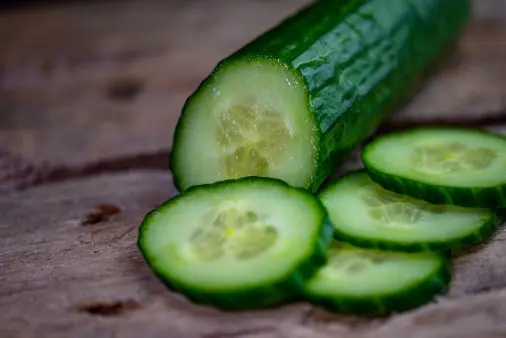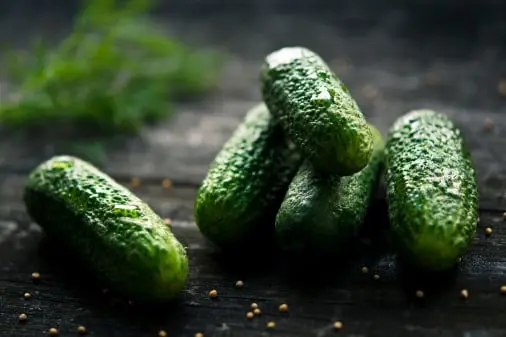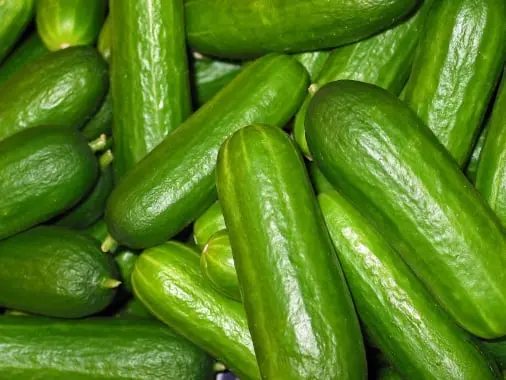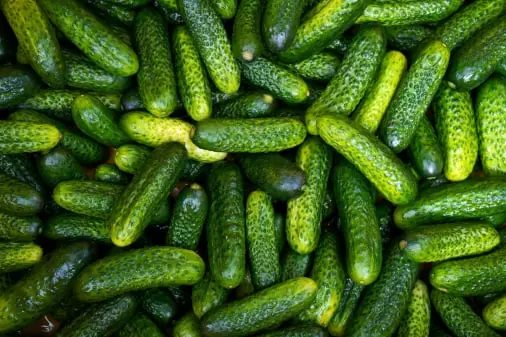Cucumber quality inspection app with AI quality tests:
Cucumber quality inspection app with AI quality tests for complete quality QC management, and manages wash, pack & label, sales and shipping.

Cucumber Quality inspections during production
View App Specifications.
Extract: Studies on fresh cucumbers before and after harvest have provided a basis for an understanding of the compositional changes occurring in the ripening fruit and during storage. The effect of cultural practices and mechanical harvesting on compositional and textural parameters has been investigated. Detailed studies on the instrumental analysis of cucumber textural components have been completed. Studies on the control of bloating in brined cucumbers represent a very exciting and productive area of current interest. The analysis of the flavor component of cucumbers and their biogenesis have received considerable attention. Research needs are specified

Daily Cucumber packhouse hygiene checklist
CUCUMBER QUALITY DETAILS: Good quality cucumbers should be firm, well-shaped, and have an even dark green color and uniform size. Cucumbers may be treated with an edible wax to prevent moisture loss and enhance appearance. Avoid cucumbers that are shriveled, yellow in color, or have soft spots. Pitting; water-soaked spots; decay: These are indications of chill injury. Often times, chill injured cucumbers will decay rapidly after they are brought out of storage. To prevent chill injury, do not store cucumbers below 45 degrees F/7 degrees C. Yellowing; softening: Cucumbers are sensitive to ethylene and will turn yellow and soften if exposed to the gas. Storing cucumbers at high temperatures may also promote yellowing. For best quality, keep cucumbers away from ethylene-producing fruits and ripening rooms. Store at 45-50 degrees F/7-10 degrees C. Shriveling: Storing cucumbers in an area with low humidity will promote shriveling. For best quality, maintain humidity level of 85-95%. Soft, sunken ends; loose seed cavity: These are indications of over mature product. Be sure to inspect cucumbers carefully upon arrival. Storage/Handling: Temperature/humidity recommendation for short-term storage of 7 days or less: 45-50 degrees F. 85„95% relative humidity.

Cucumber Quality control & management
Several quality attributes of cucumber fruits grown in the spring and fall and from plants grafted onto different rootstocks were compared. The acidity of spring-grown cucumbers was highest in fruits from the 'Andong' rootstock followed by fruits from the 'Heukjong' rootstock and from intact cucumber plants. Electric conductivity (EC), an indication of the total mineral concentration, was highest in fruit juice from intact plants. In contrast, with fall-grown cucumbers, the EC was higher in fruits from plants grafted onto 'Heukjong'. The soluble solids content and sugar content of fall-grown cucumbers were higher in intact plants as compared to those from the 'Heukjong' rootstock. This coincided with the results obtained with spring-grown cucumbers. Glucose was the major sugar in cucumber fruits; 70–100% higher in concentration than fructose. The fructose content was highest in fruits from intact plants and lowest in fruit from the 'Heukjong' rootstock. On the basis of only the fructose content, the sweetness of fruits from the 'Heukjong' rootstock was about 72% of that of fruit from intact cucumbers. Fruit juice from the 'Andong' rootstock contained almost an equal amount of fructose as the juice from intact cucumbers. This clearly indicates the significance of rootstocks on sweetness. Sucrose was not detected in cucumber fruit juice.

Cucumber Supplier quality inspection & management
Significant progress has been made in recent years in assessing and controlling cucumber quality. Studies on fresh cucumbers before and after harvest have provided a basis for an understanding of the compositional changes occurring in the ripening fruit and during storage as fresh or fresh pack cucumbers. The effect of cultural practices and mechanical harvesting on compositional and textural parameters has been investigated, while detailed studies on the instrumental analysis of cucumber textural components has been completed. Studies on the control of bloating in brined cucumbers represents a very exciting and productive area of current interest. The analysis of the flavor component of cucumbers and their biogenesis has received considerable attention and future work on this topic may focus on factors influencing the levels of flavor precursors such as fatty acids.